Betty, Celina, Vikas & Elizabeth
Good morning star-shine, the earth says hello:)
Early this morning we were woken up abruptly by the pounding rain hitting our tents. After quickly falling back asleep, we again awoke for our usual breakfast call time at 8:30 to baboons invading our camp site. After gathering around to capture pictures of them and being careful not to taunt, chef John (the second, named by John, the first), Kevin and Lucas prepared a delicious breakfast for us. After munching on our yummy yummy breakfast, accompanied by “MMM’s!!!”, we began preparing for our lepidopterathon (aka butterfly-a-thon). This was a friendly competition where we split into groups and competed to see who can identify the most butterflies species in 3 hours, with the wonderful help of our guide Job. Our group identified 26 butterflies with the class identified 55 unique butterfly species all together. Our personal favourites were the African Map Butterfly, the Blue Vagrant and the Kakamega Forester. The Kakamega forest is home to over 400 species of butterflies so this is far from an exhaustive list. During the competition we also came across some baboons, and a Forest Cobra.
It was a long and hot morning, so when we all came back to the camp site, we were welcomed by the scent of a delicious lunch. We are incredibly grateful to the wonderful Bunduz crew for their immense support and hospitality during our stay. We wouldn’t be able to do or see as much as we have without them holding down the fort.
After lunch, we learned from the final article presenters (Cassidy, Sarah, Mikaela and Betty), about their associated articles. Then we all started scheduling and practicing our debates, our next and final academic assignment during our stay here. We then had some free time to use as we please, some of us used this time to relax ourselves, and others used this time to rest.
Yet again, chef John prepared a DELICIOUS dinner for us. If you can’t tell, we eat a lot here, so don’t be surprised if we come back a little more rotund than when we left.
We then took a trek to a nearby pond to go frogging Dr. Lougheed and conduct some water chemistry experiments with Dr. Wang. Some of us tried to stretch ourselves to do both activities, which was very difficult due to the depth of each of these independent observations and how easily carried away one can become with them independently.
In the frogging exercise, we quickly familiarized ourselves with the frogs in the wetland. As we arrived to the pond, Job quickly made clear the Eastern Groove Crowned bullfrog on the log submerged in the green matter (similar to Lemna or pondweed back home) infested waters. Following this, Professor Lougheed got extremely comfortable on the forest floor, setting up a “leaf stage” for what was to come. Individually, students would approach him with frogs they managed to capture, both in the water and on tree leaves by the shore (we learned how to use a gentle cupping motion with our hands), and set them up in the spotlight for Professor Lougheed to capture in celluloid (well in digital really). He had to switch his current lens for a new one, highlighting that he had brought this so he might as well use it! We found out later that these species were: Hyperolius kiviuns, Common Reed Frog, Hyperolius viridiflavus, Hoplobactracus occipitalss (Eastern Groof Crowned Bullfrog), and Xenopus victorianus. They were incredible to see and capture up close!
With the water chemistry experiments, Dr. Wang explained how elevation plays a role in water oxygen and pH levels. We collected samples at night and collected our data, and we plan to collect more data tomorrow during the day, to test Dr. Wang’s hypothesis, that during the day water contains higher dissolved oxygen content and higher pH compared to at night.
After getting back from this very exciting activity all of us were very tired and went to sleeph
Lala Poha (Sleep Well in Swahili).
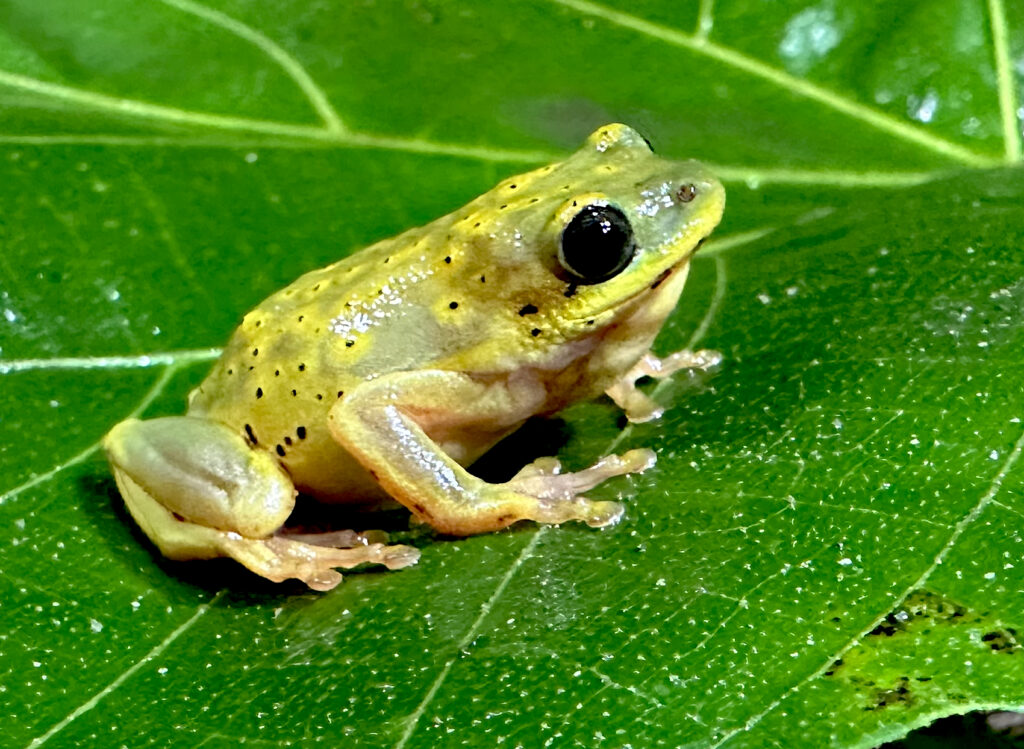
Common Reed. Frog, Hyperolius viridiflavus
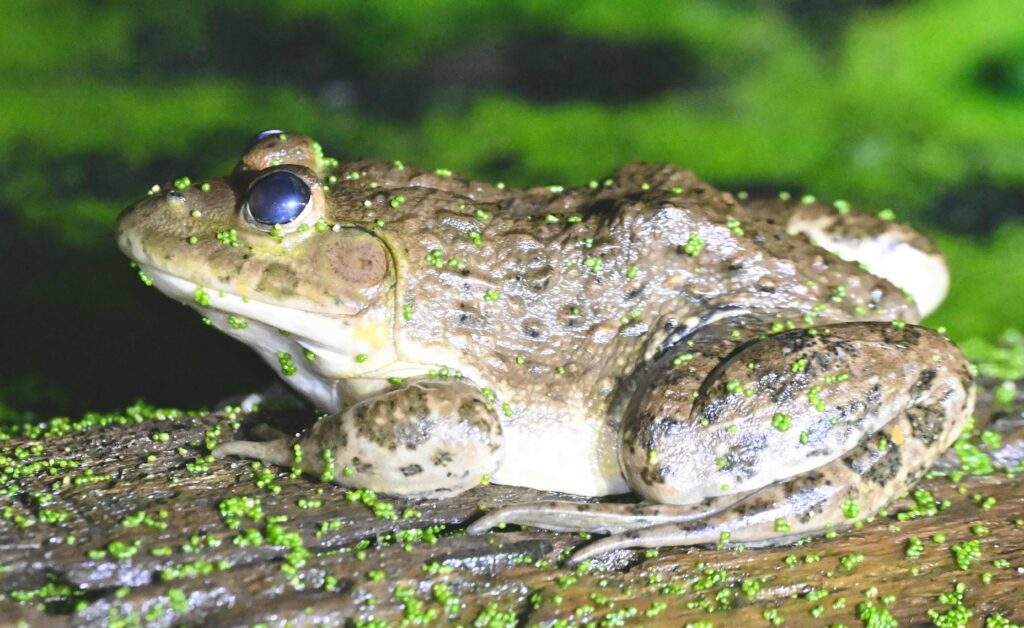
Groove-crowned bullfrog
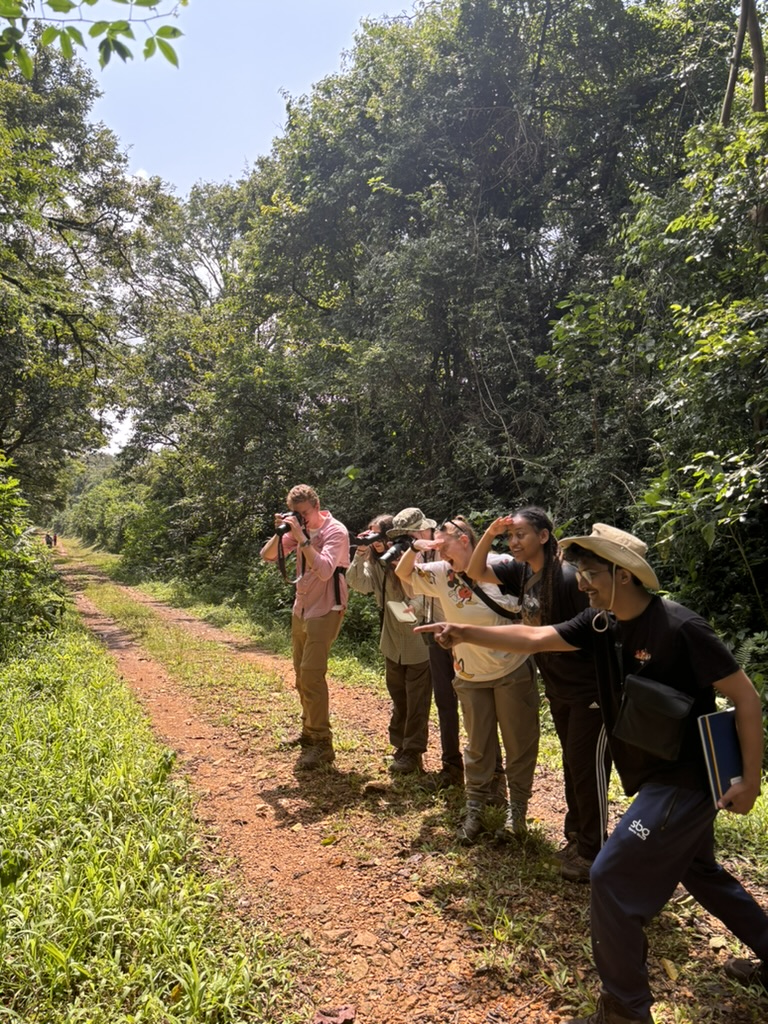
Looking at something
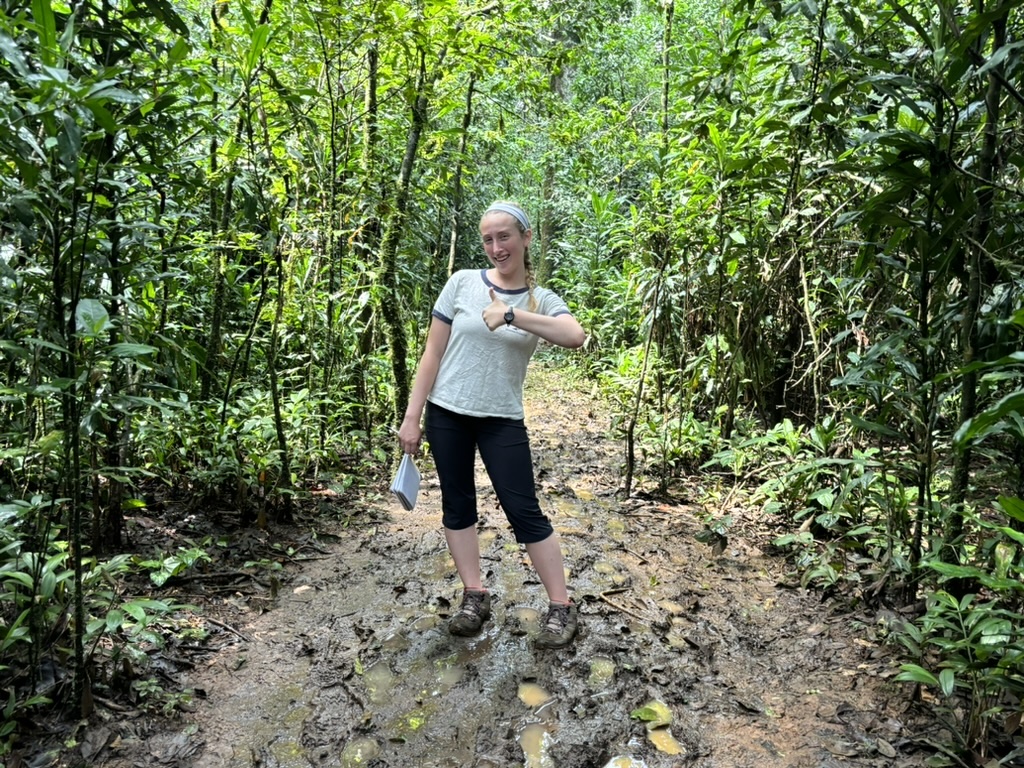
Hannah enthusiastically agreeing that the word ‘tinkletorium’ should be entered into the popular course lexicon.
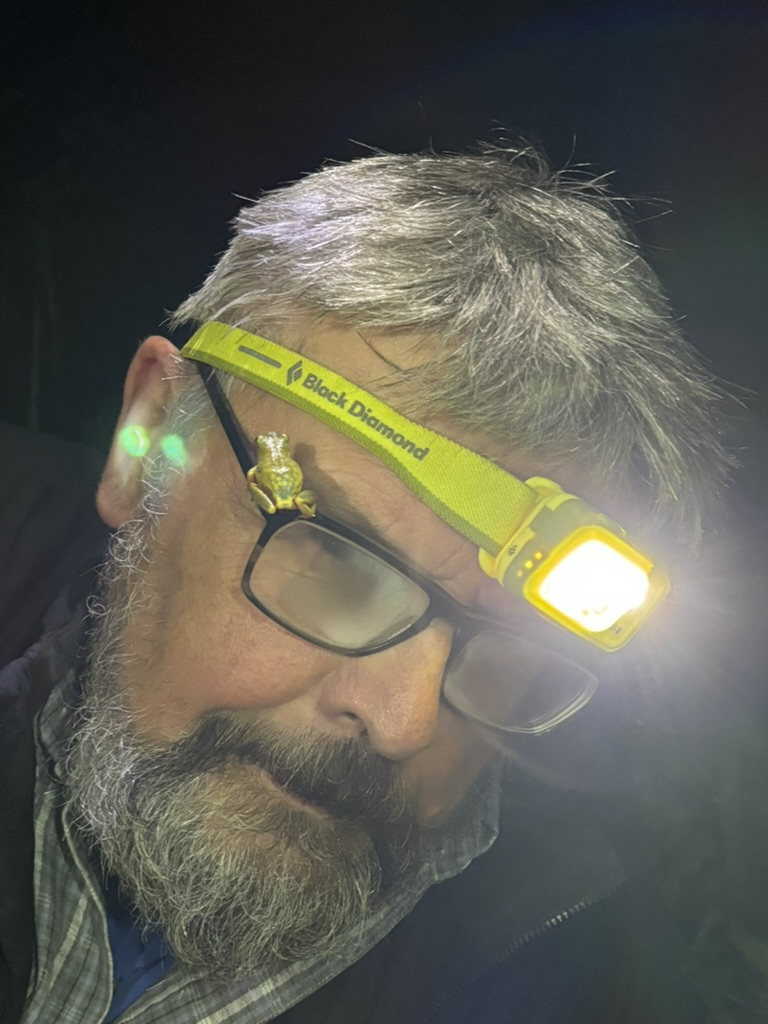
Frog on frogologist

Walking the Dracena-lined trail

Night selfie
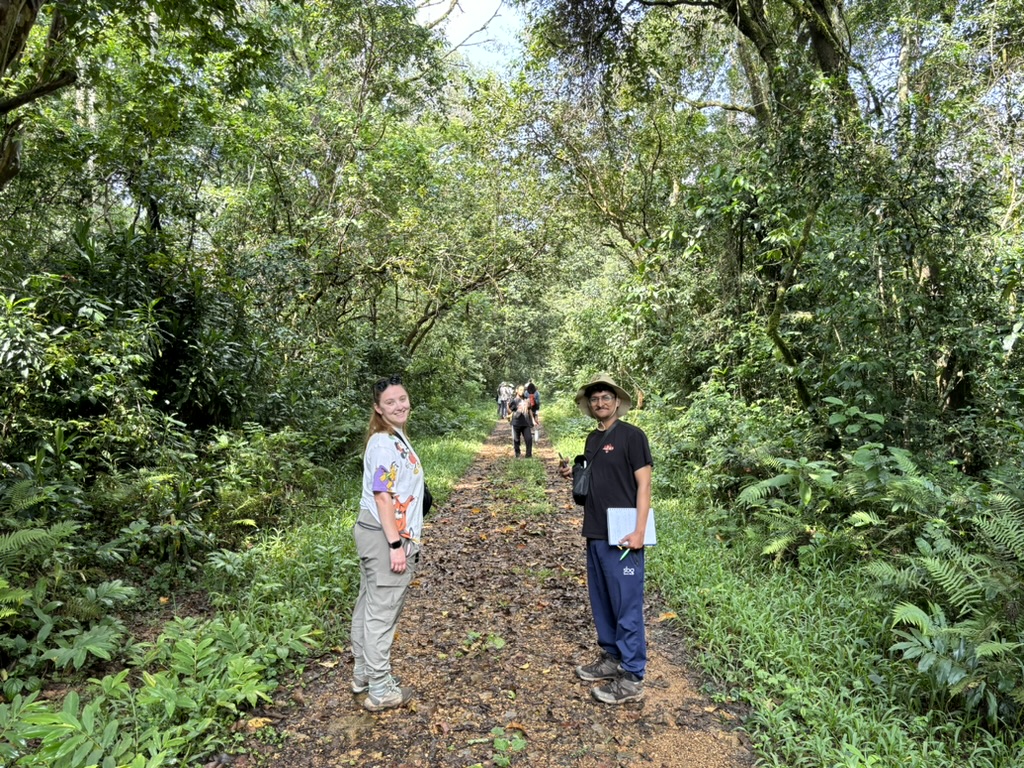
Elizabeth and Vikas looking back
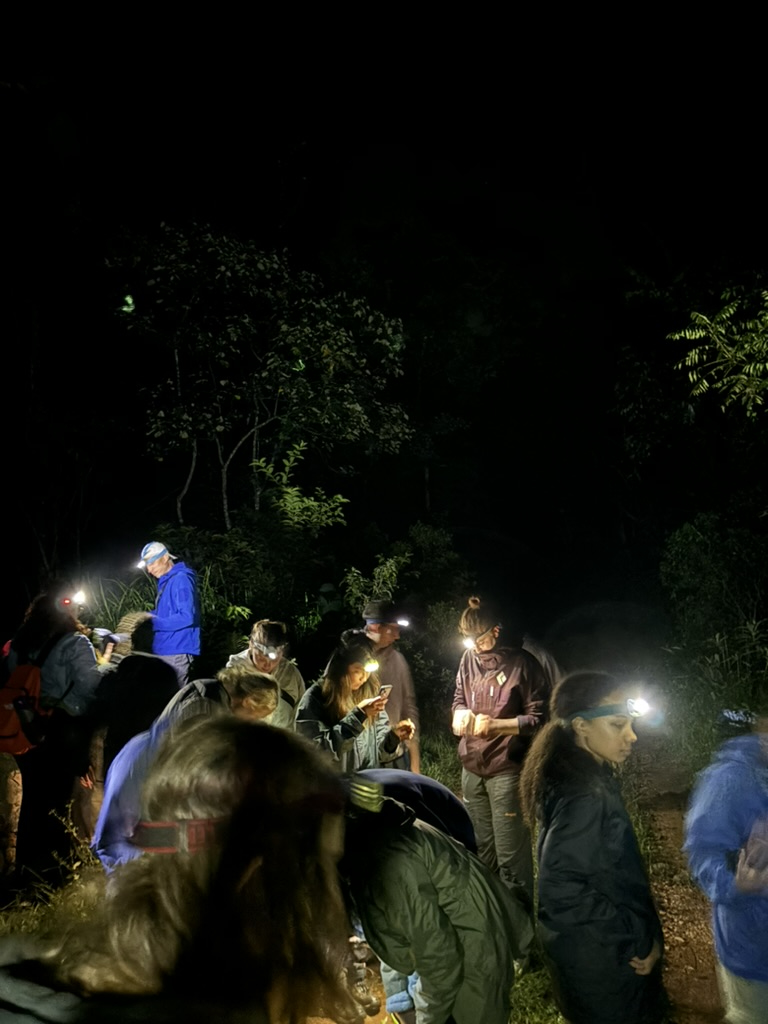
Night maneuvers

Advert for Nikon
Leave a Reply